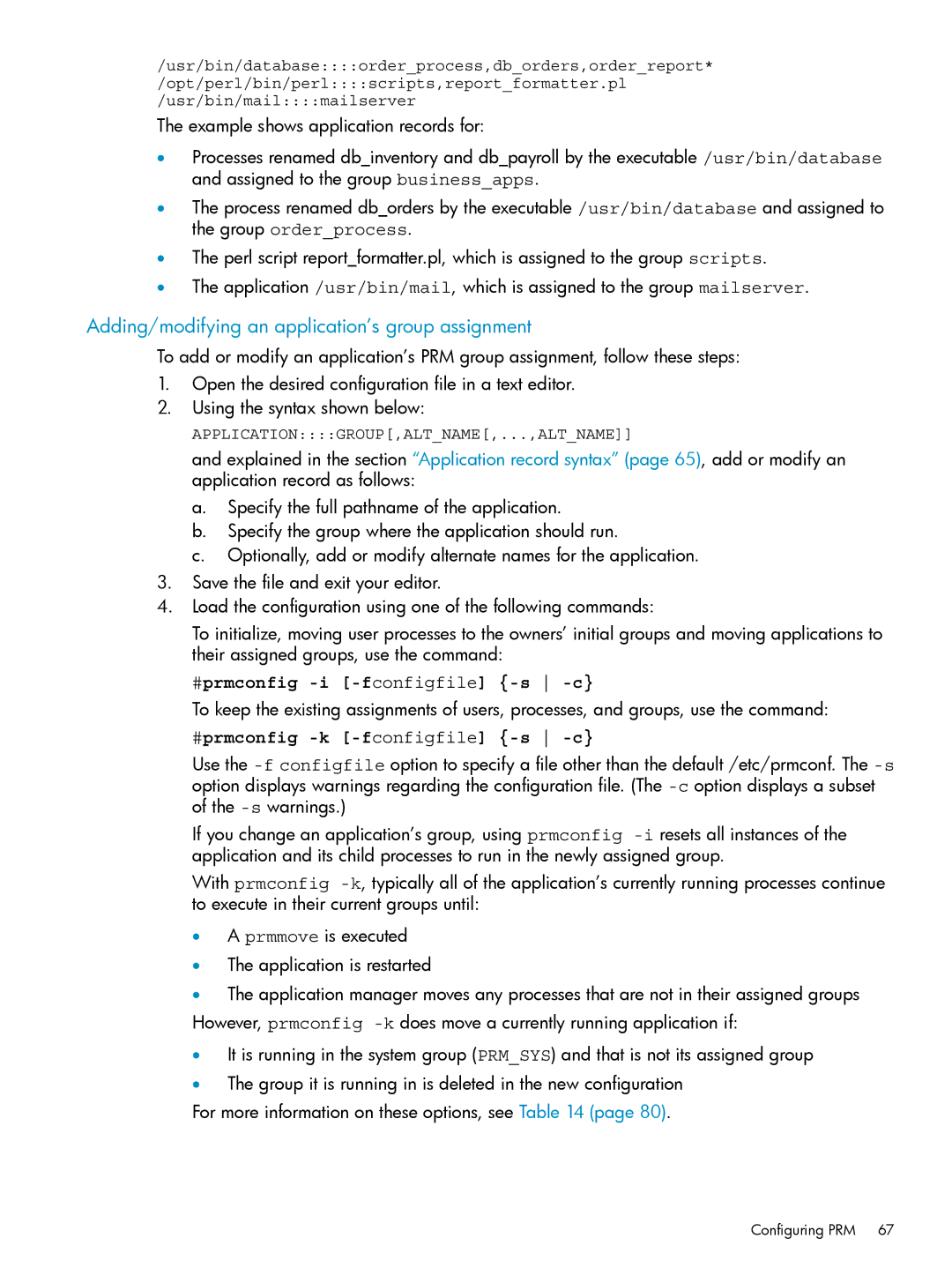/usr/bin/database::::order_process,db_orders,order_report* /opt/perl/bin/perl::::scripts,report_formatter.pl /usr/bin/mail::::mailserver
The example shows application records for:
•Processes renamed db_inventory and db_payroll by the executable /usr/bin/database and assigned to the group business_apps.
•The process renamed db_orders by the executable /usr/bin/database and assigned to the group order_process.
•The perl script report_formatter.pl, which is assigned to the group scripts.
•The application /usr/bin/mail, which is assigned to the group mailserver.
Adding/modifying an application’s group assignment
To add or modify an application’s PRM group assignment, follow these steps:
1.Open the desired configuration file in a text editor.
2.Using the syntax shown below:
APPLICATION::::GROUP[,ALT_NAME[,...,ALT_NAME]]
and explained in the section “Application record syntax” (page 65), add or modify an application record as follows:
a.Specify the full pathname of the application.
b.Specify the group where the application should run.
c.Optionally, add or modify alternate names for the application.
3.Save the file and exit your editor.
4.Load the configuration using one of the following commands:
To initialize, moving user processes to the owners’ initial groups and moving applications to their assigned groups, use the command:
#prmconfig -i [-fconfigfile] {-s -c}
To keep the existing assignments of users, processes, and groups, use the command:
#prmconfig -k [-fconfigfile] {-s -c}
Use the
If you change an application’s group, using prmconfig
With prmconfig
• A prmmove is executed
• The application is restarted
• The application manager moves any processes that are not in their assigned groups However, prmconfig
• It is running in the system group (PRM_SYS) and that is not its assigned group
• The group it is running in is deleted in the new configuration For more information on these options, see Table 14 (page 80).
Configuring PRM 67
